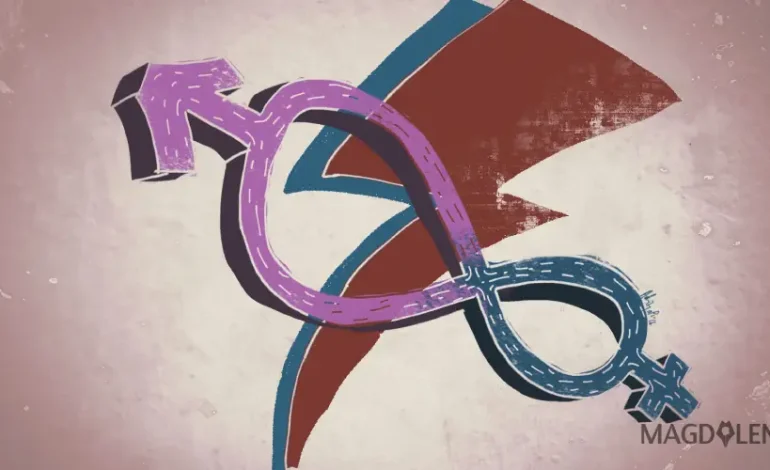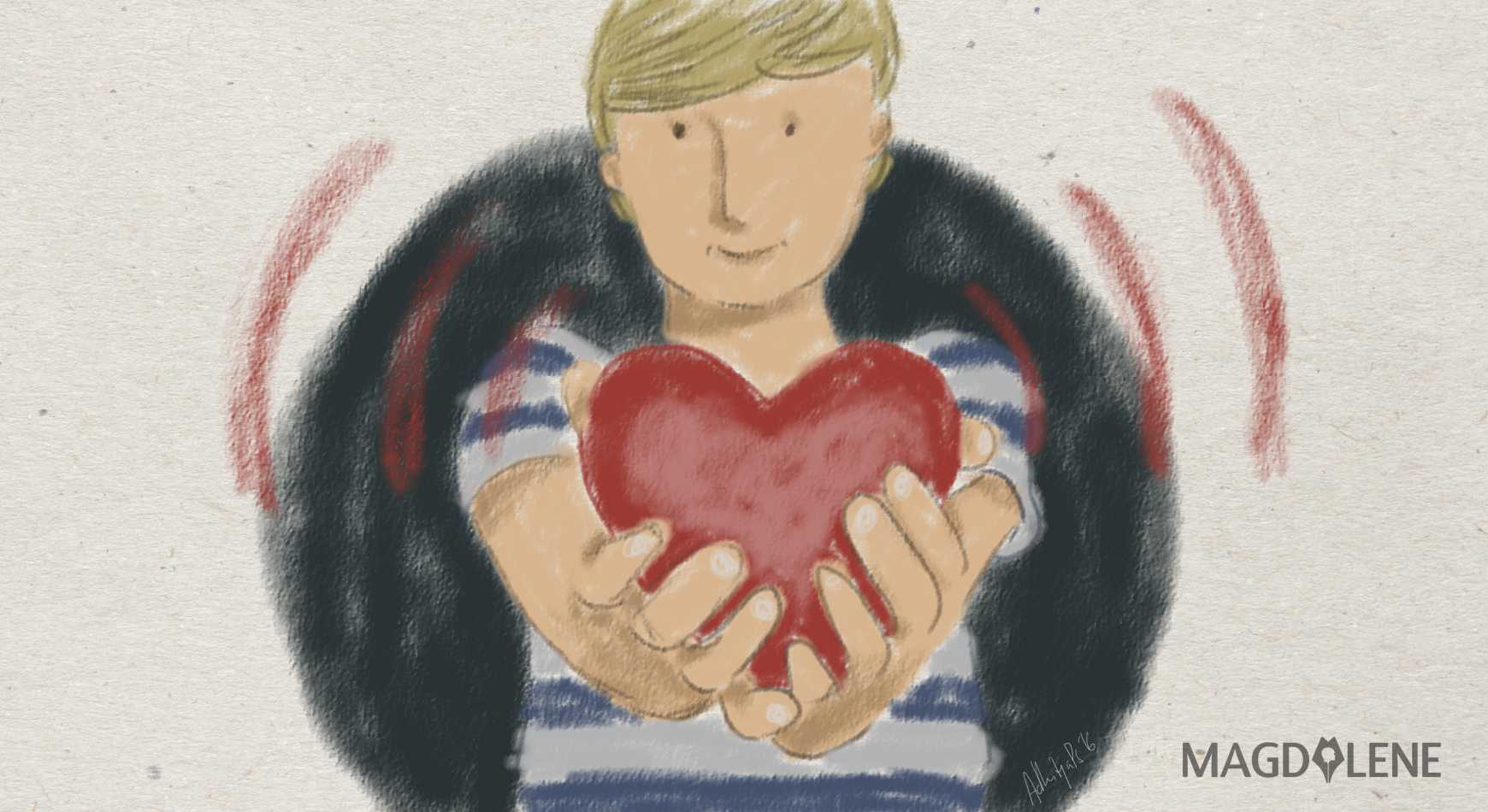Gender Fluidity Is Great – But Only If You’re Famous

For all that Miley Cyrus’s cropped hair and crotch-clutching and “I don’t relate to being boy or girl” have inspired articles about gender fluidity as the new “in” thing, it’s hard not to see Cyrus’s “trailblazing” as derivative of David Bowie – a true icon in so many ways, not least in his defiant smashing of gender norms.
As early as 1972 – 20 years before Cyrus was born – a married (to a woman) Bowie publicly announced his bisexuality. He spent his career creating provocative persona that bent conventional ideas of gender and sexuality at every conceivable turn.
In a PSA campaign of just two years ago, Tilda Swinton (also known for her androgyny) and Bowie appeared, dressed in traditional gender garb. But this is no ordinary picture of “man” and “woman”: Swinton stands before us as a handsome man in aviators and trench coat, Bowie a classic blonde woman in French-twist scarf and matronly dress. The text reads: “Gender is between your ears, not between your legs.”
Bowie’s legacy seems to be everywhere now. “Gender fluidity” was a trending catchphrase in 2015 (“the new black”). Films such as The Danish Girl and Tangerine and TV series such as Amazon’s Transparent are attracting millions of viewers.
The UK led the way: when the Gender Recognition Act was passed in the UK in 2004, allowing trans individuals to change their official genders without surgery, it was the first such legislation in the world. Yet a recent parliamentary report stressed that there’s a “long way to go” to achieve equality in the UK and to protect trans individuals, and called for crucial reforms in the country.
Why is the process required for a Gender Recognition Certificate so expensive and degrading, for example, when other countries (Netherlands, Argentina, Denmark, Malta, Colombia, Ireland) allow for self-declaration? Aren’t we continuing to pathologize transgender identification as we once did homosexuality? How can we incarcerate trans women in men’s prisons, when that clearly endangers their lives? “The Government must look into the need to create a legal category for those people with a gender identity outside that which is binary and the full implications of this,” declares the report.
A History of ‘Passing’
All this echoes worryingly with research of mine into the literature of race relations and racial identity. “Passing” is a term traditionally used to refer to mixed race people who have chosen to self-identify as white. It was a popular idea (and fear) during the slavery era in the United States and led to the legal evolution of the “one-drop” rule that labeled anyone who was part-black (one drop of “black blood” or one sub-Saharan African ancestor) black. The term referred to the way that these so-called blacks deceived people into thinking they were white, and in so doing, could escape enslavement or crushing poverty and humiliation under segregation.
The term took on new currency with a wave of literature at the turn of the 20th century about “passing” for rewards that were no longer life-and-death but ranged from an opening up of opportunities to a sense of personal affiliation and identification. Among these are James Weldon Johnson’s 1912 anonymous faux-autobiography, Autobiography of an ex-Coloured Man; Winnifred Eaton/Onoto Watanna’s 1915 and 1916 pair of semi-scandalous Asian American memoirs, Me and Marion; and Nella Larsen’s 1929 punishing novella, Passing.
I’m teaching a course on “passing” next year, and as I choose the syllabus I find I’m not limited to stories about racial “passing”. Jackie Kay’s 1998 novel, Trumpet is the fictionalization of the life of Billy Tipton, an American jazz pianist who lived his life as a man. When he died, paramedics discovered his female genitalia, surprising Tipton’s family, who said they had no idea.
When interviewed soon after, one of his wives said, “The real story about Billy Tipton doesn’t have anything to do with gender. He was a fantastic, almost marvelous, and generous person.”
A son responded, “He’ll always be Dad”.
It is strange, of course, to continue to think in terms of “passing” today, if we now recognize that the one-drop rule, and race at large, are social constructions, and that gender is “between your ears”. What “passing” says is that a person who appears in any way black can only identify as black (but don’t we say this about Obama, son of a white mother and black father?); or that a person who identifies as black but has white ancestry can only identify as white (think the recent case of Spokane NAACP leader, Rachel Dolezal); or that a person who identifies as a woman might be prevented from playing on a women’s sports team to ensure “fair competition”.
From David Bowie to Miley Cyrus, we have been convincing ourselves we’re moving towards acceptance of gender blurring, gender fluidity, non-binary gender. That the gender between your legs is not the one that matters. But it seems as if that’s only the case for pop icons and that the real world still has a long way to go.
This article was first published in The Conversation.






















